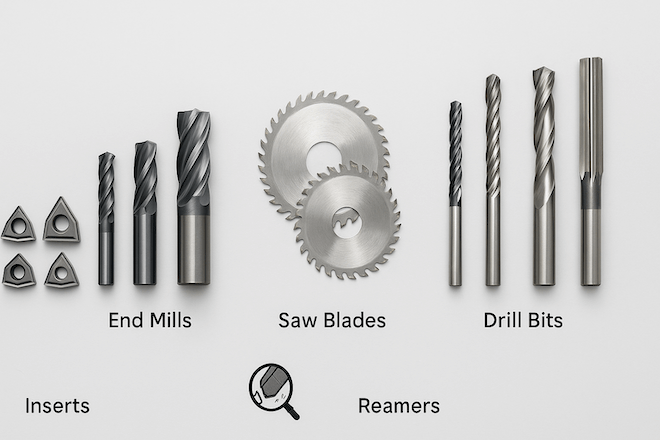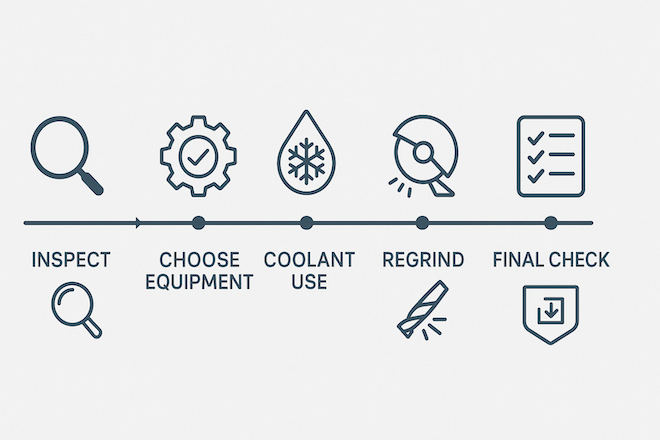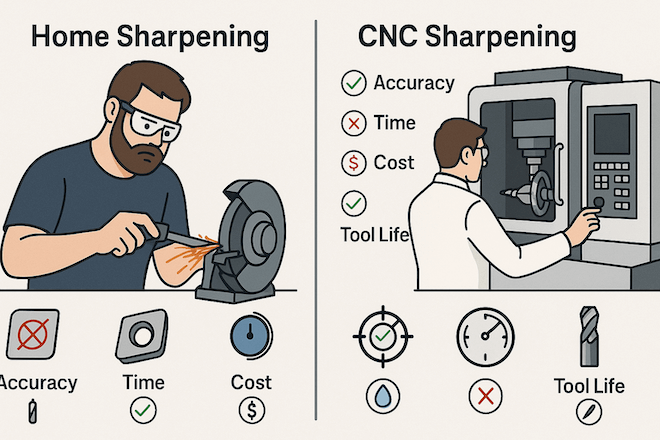碳化钨切削刀具以其硬度和长寿命而闻名。但即使是最好的碳化钨刀具,在频繁使用后也会变钝或磨损。许多刀具无需丢弃,只需进行磨锐和修复,即可恢复其切削性能。
在本指南中,我们将用简单的英语逐步讲解如何磨锐和修复碳化钨刀具。您还将学习如何判断何时需要磨锐,以及如何选择正确的方法和设备。
为什么要修复碳化钨刀具?
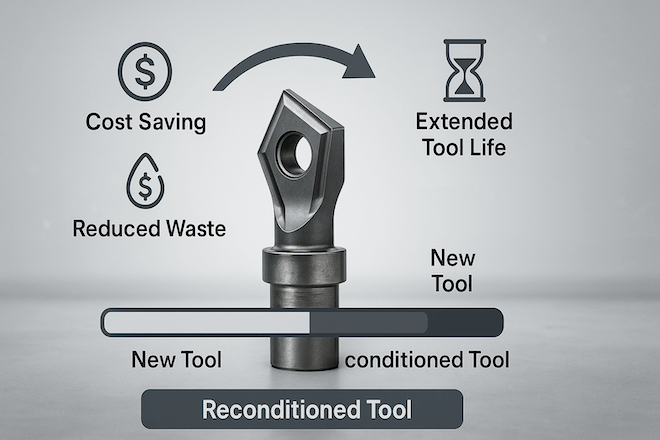
碳化钨刀具比普通钢制刀具成本更高。因此,对其进行刃磨和重复使用具有良好的商业价值。修复可以帮助您:
节省更换费用
保持刀具几何形状和精度
减少生产停机时间
减少浪费并支持可持续发展
Retop 提供全系列硬质合金刀具,并提供重磨和修磨服务。您可以点击此处了解更多信息: 碳化钨切削刀具.
硬质合金刀具需要磨锐的常见迹象
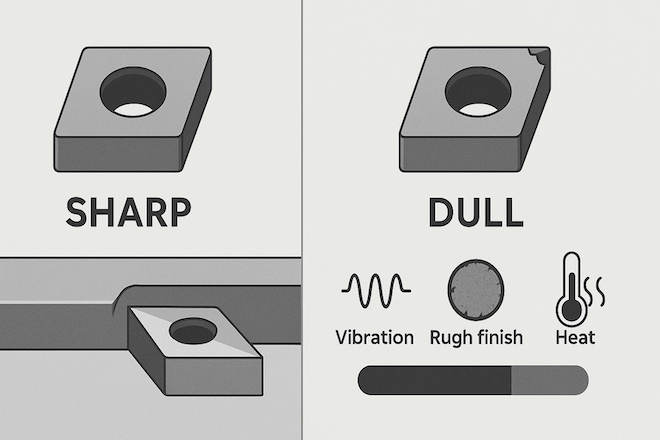
不确定何时需要重新磨利?留意以下迹象:
切削刃钝
加工过程中的颤动或振动
工件表面光洁度差
增加切削力或刀具压力
刀具侧面或拐角处有明显磨损
长时间使用钝的工具可能会导致过热、工具断裂或零件缺陷。
一步步:如何磨利碳化钨切削刀具
1.仔细检查工具
磨锐前,请在强光或放大镜下检查工具。检查以下内容:
磨损痕迹
裂缝
芯片
边缘破损
严重损坏的工具可能不值得磨砺。
2. 选择合适的磨刀设备
磨削碳化钨需要使用金刚石磨料或CBN砂轮。普通砂轮无法满足要求。
常见的机器和工具包括:
数控工具磨床
精密平面磨床
通用工具和刀具磨床
金刚石砂轮(树脂或陶瓷结合剂)
对于复杂工具或涂层工具,建议采用专业服务。
3.使用冷却液或润滑剂
磨削会产生热量,这可能会损坏硬质合金。请务必使用:
水溶性冷却剂或
油基冷却液
这有助于减少热裂纹并保持工具硬度。
4. 重新研磨切削刃
重磨时应遵循原始几何形状。需要重磨的关键部件包括:
主间隙角和次间隙角
前角
槽刃(用于钻头和立铣刀)
圆角或倒角
使用细粒度的金刚石砂轮可获得光滑、锋利的边缘。
5. 再次清洁和检查
锐化后:
清洁工具
检查表面裂纹
如果可能的话,测试切割性能
如果您有涂层(如 TiAlN 或 TiCN),则可能需要在磨锐后重新涂覆工具。
在此了解有关涂层的更多信息:
👉 碳化钨涂层指南
硬质合金刀具可以磨锐多少次?
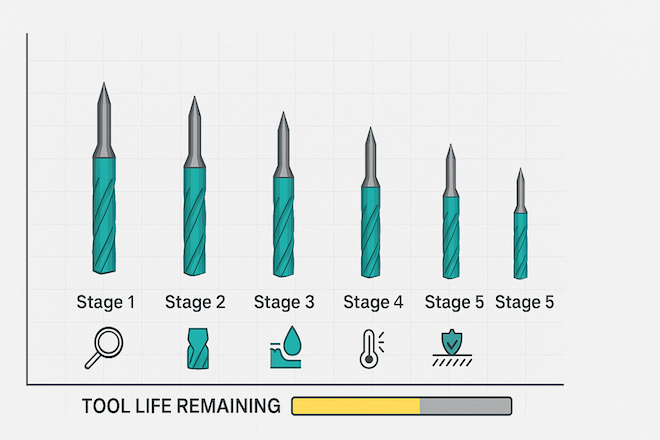
这取决于:
工具类型
初始大小
应用
重磨质量
通常,硬质合金刀具在需要完全更换之前可以重新磨锐 3 至 5 次。
定制硬质合金刀具刃口较厚,可进行更多次修磨。请参阅我们的指南:
👉 为什么碳化钨切削刀具具有优越的耐磨性
如何最大程度延长刀具刃磨寿命

使用这些技巧可以延长刀具寿命并延迟磨刀:
选择正确的 硬质合金牌号 为您的材料
使用适当的切削速度和进给
运转时添加冷却液
避免冲击载荷或断续切削
将工具存放在干燥、有衬垫的盒子中
使用涂层硬质合金刀具可延长使用寿命
更多提示在这里:
👉 延长碳化钨切削刀具寿命的维护技巧
涂层刀具可以重新磨锐吗?

是的,但必须先去除涂层。大多数涂层的去除方法如下:
化学剥离
等离子蚀刻
磨锐后,可以重新涂层以继续保护工具。
Retop 值得信赖的修复服务
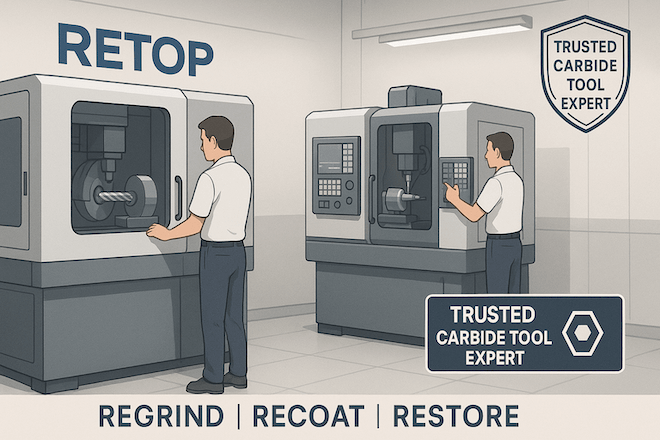
在 Retop,我们不仅提供高性能碳化钨工具,还提供:
刀具检验与评估
精密修锐和重磨
刀具重涂层服务
定制工具修复或重塑
我们先进的 CNC 研磨设备和严格的质量控制确保您的翻新工具性能如新。
结论
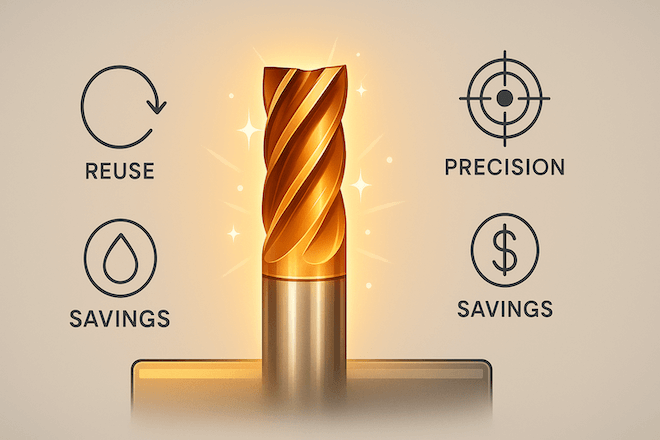
刃磨和修整碳化钨刀具是延长刀具寿命并节省成本的明智之举。使用合适的设备和技术,或者选择像 Retop 这样值得信赖的供应商,您可以让钝化的刀具焕然一新,并保持高效的运营。
如果您不确定如何重磨或需要帮助,请联系我们寻求支持。我们随时为您提供维护和优化硬质合金刀具的帮助。

